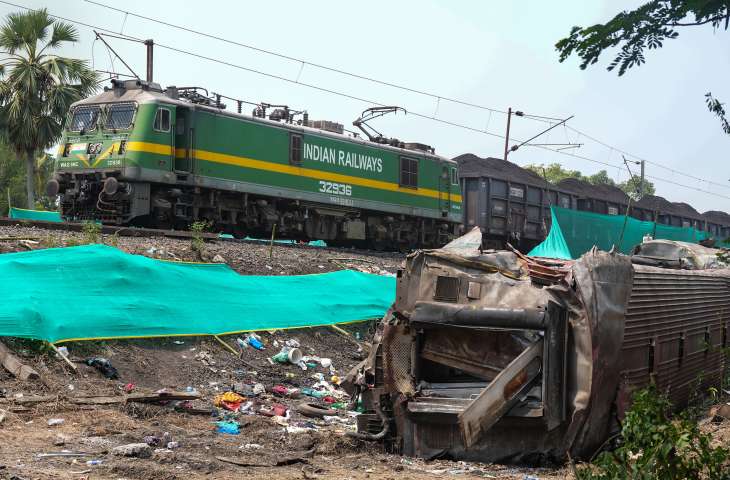
odisha train accident: Days after the Balasore train accident, the Railway Board on Saturday ordered double locking arrangements for all its signaling assets. Officials said the board also issued instructions to strengthen the protocol for resuming train movement after maintenance work.
In its latest series of missiles sent to railway zones in the wake of the June 2 train accident involving three trains, which claimed over 280 lives and injured over a thousand.
The Railway Board ordered double-locking arrangements for all relay rooms with train control mechanisms, relay huts housing signaling and telecommunication equipment of level-crossings, and point and track circuit signals.
The order indicates that “access to the relay room” was the key to the “signalling interference” that caused the Coromandel Express to take the loop line at Balasore and crash into a stationary goods train.
“This double locking will ensure that no one can access these places in isolation,” said an official.
The order states that level crossing gates (gumti/cabins), housing signaling and telecommunication equipment in the station yard, should be treated as relay huts and unless double-locking arrangements are provided, the existing single lock The key will remain with the station. Master (SM).
“Relevant entries regarding issue and deposit of keys should be maintained by the SM in the same manner as in the Station Relay Room. The proforma for handing over/taking back of keys by the ASM (Assistant Station Manager) on duty has a column specifying that the The location for which the key was taken by the maintenance staff has been properly closed and locked by the maintenance staff, who is returning the key,” the order said.
Officials said that one aspect that has emerged from the preliminary investigation is that some work was going on near the site of the accident.
He said that a disconnection memo (to close the interlocking system and start work) and a reconnection memo (reconnection of the system indicating the end of work) had been received by the station manager.
Although in reality, the technician bypassed the system as the work was not completed and he rigged the location box to obtain a “green signal” for the Coromandel Express.
The present order, therefore, prescribes the proper disconnection-reconnection protocol to be followed for signal maintenance, repair, alteration works.
Once reconnection is accepted by the Station Master for the first train after completion of any work, the reception signal (the signal controlling the reception of trains in a station) should not be taken off and should be will be stopped at the stop. Signal.
Similarly, the departure signal for run-through trains (the signal provided to send the train out of the station) should be closed only after the berthing portion of the first train is occupied (when all berths are lined up at their designated places). .
The Joint Procedure Order for Disconnection and Reconnection for Signal Gear, issued jointly by the Signaling and Traffic Departments of the Railway Board, says, “These should be applicable to trains in all up and down directions.”
This is the third such order issued by the Railway Board on signaling since the accident, which is now being probed by the CBI.
(with PTI inputs)